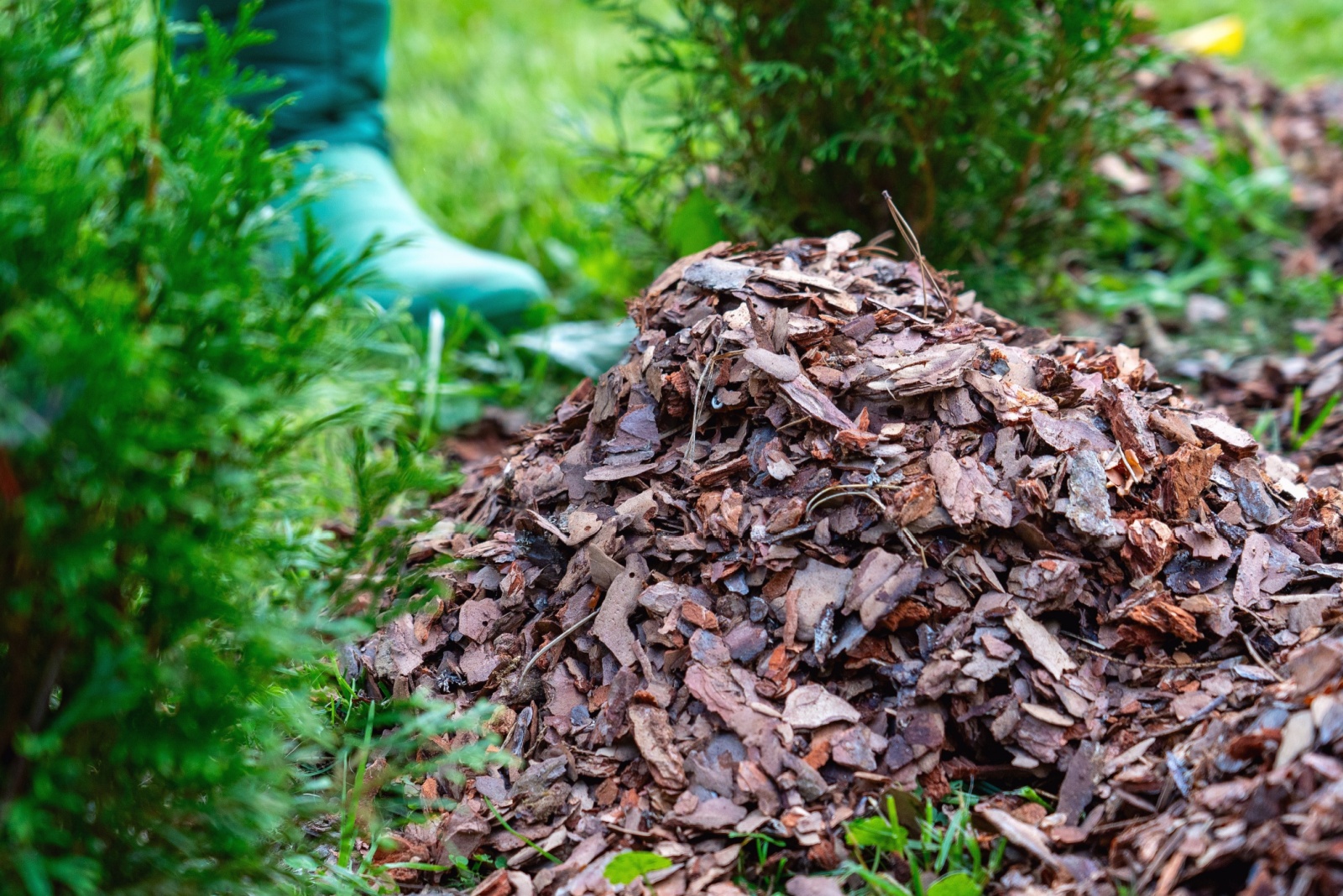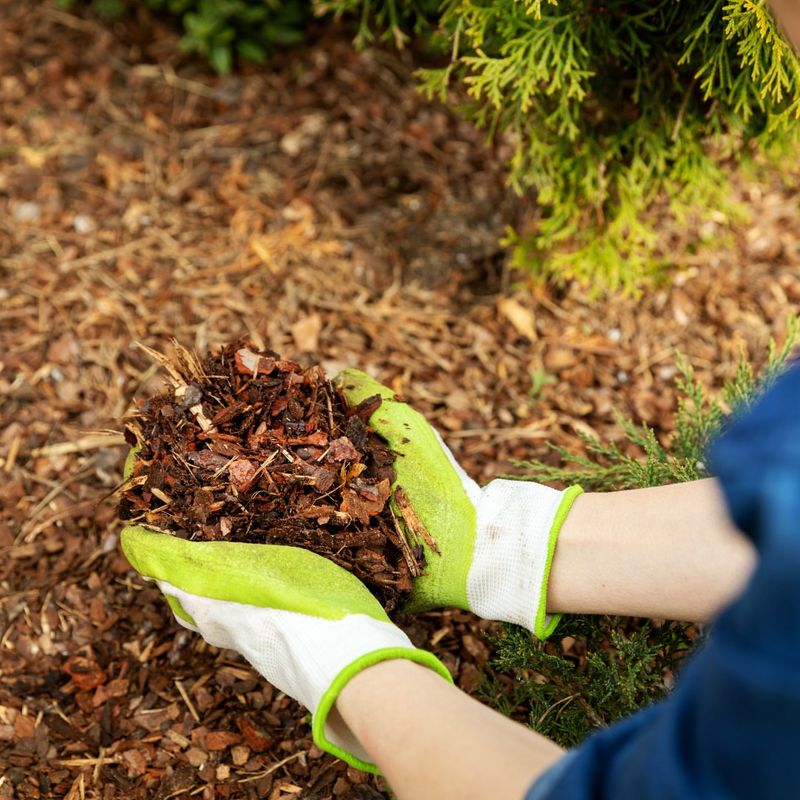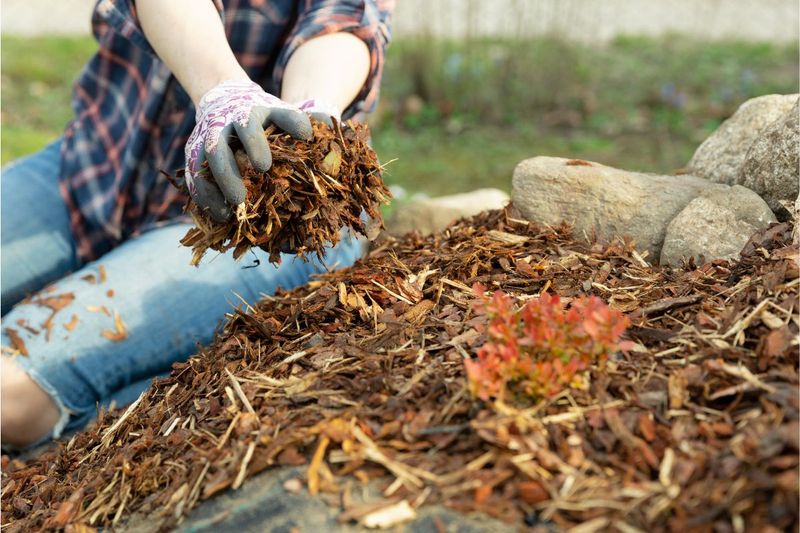Winter in New Jersey can be tough on gardens, with freezing temperatures and harsh winds threatening your plants. Mulching is one of the best ways to protect your garden during the cold months, acting like a warm blanket for your soil and roots.
Following the right mulching rules can mean the difference between a thriving spring garden and one that struggles to recover.
1. Wait Until The Ground Freezes Before Applying Mulch
Patience pays off when it comes to winter mulching. Many gardeners make the mistake of adding mulch too early in the season, which can actually trap warmth and prevent the ground from freezing properly.
When soil stays warm under mulch, plants might continue growing when they should be going dormant. Waiting until after the first hard freeze ensures your plants have properly settled into their winter rest period.
Check the soil temperature by touching it with your hand—if it feels frozen solid, you’re ready to mulch.
2. Choose The Right Type Of Mulch For Winter Protection
Not all mulch materials work equally well for winter protection in New Jersey gardens. Organic options like shredded leaves, straw, or wood chips are excellent choices because they insulate soil while breaking down slowly over time.
Pine needles work wonderfully for acid-loving plants like azaleas and blueberries. Avoid using heavy materials like grass clippings, which can mat down and suffocate plants when they get wet and freeze.
Whatever you pick, make sure it’s free from weed seeds and disease.
3. Apply Mulch At The Proper Depth For Best Results
Getting the depth right is crucial for effective winter mulching. A layer that’s too thin won’t provide enough insulation, while too much can smother plants and create problems with moisture and pests.
For most perennials and garden beds, aim for a 2-4 inch layer of mulch. Around trees and shrubs, you can go slightly deeper, but always keep mulch away from direct contact with trunks and stems.
Think of it like Goldilocks—not too much, not too little, but just right for protection.
4. Keep Mulch Away From Plant Stems And Tree Trunks
Picture a donut shape when applying mulch around plants—that’s the goal. Piling mulch directly against stems, crowns, or tree trunks creates a cozy home for rodents, insects, and diseases that can damage or destroy your plants over winter.
Leave a 2-3 inch gap around the base of each plant to allow air circulation and prevent rot. This simple step prevents bark damage and keeps moisture from sitting against vulnerable plant tissue.
Your plants will thank you come springtime with healthy, vigorous growth.
5. Remove Or Reduce Mulch When Spring Arrives
As temperatures warm up in spring in New Jersey, that protective winter blanket needs adjustment. Leaving thick mulch in place too long can delay soil warming and prevent new growth from emerging properly.
Start pulling back mulch layers in early spring when you see signs of new shoots pushing through. You don’t have to remove it completely—just rake it back to a thinner layer of about 2 inches.
Watch the weather forecast and be ready to temporarily replace mulch if a late freeze threatens tender new growth.
6. Mulch Tender Perennials And Newly Planted Items First
Some plants need extra winter protection more than others. Tender perennials, roses, and anything planted within the last year should be at the top of your mulching priority list.
Young plants haven’t developed extensive root systems yet, making them especially vulnerable to freeze-thaw cycles and temperature swings. Borderline hardy plants that might struggle in New Jersey winters also benefit from extra mulch coverage.
Focus your efforts where they’ll make the biggest difference, and your garden will reward you with better survival rates.







